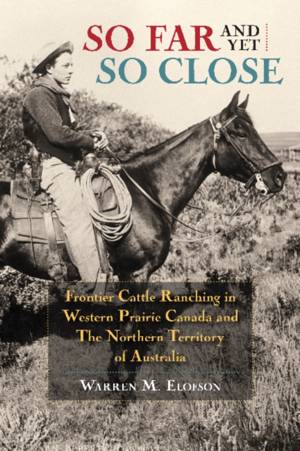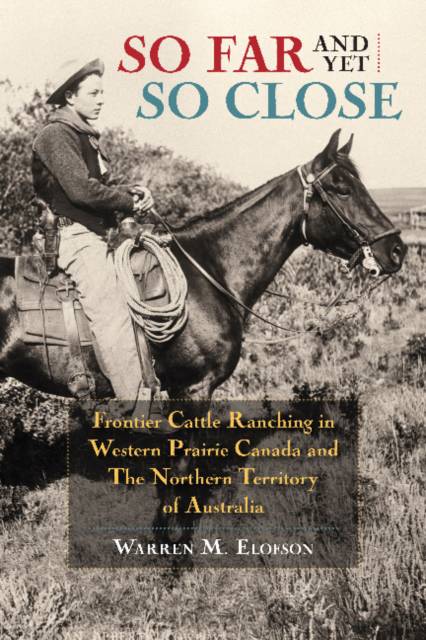
- Retrait gratuit dans votre magasin Club
- 7.000.000 titres dans notre catalogue
- Payer en toute sécurité
- Toujours un magasin près de chez vous
- Retrait gratuit dans votre magasin Club
- 7.000.000 titres dans notre catalogue
- Payer en toute sécurité
- Toujours un magasin près de chez vous
So Far and Yet So Close
Frontier Cattle Ranching in Western Prairie Canada and the Northern Territory of Australia
Warren ElofsonDescription
So Far and Yet So Close provides a comparative study of frontier cattle ranching in two societies on opposite ends of the globe. It is also an environmental history that at the same time centers on both the natural and frontier environments.
There are many points at which the western Canadian and northern Australian cattle frontiers evoke comparisons. Most obviously they came to life at about the same time: late 1870s-early 1880s. In both cases, corporations were heavy investors and utilized an open range system in which tens of thousands of cattle roamed over thousands of square acres. Ranchers shared similar problems such as predators, disease, and weather, as well as markets. Ultimately, a nearly indistinguishable "country" culture developed in these geographically disparate and distant lands, which is still apparent today.
Many similarities were in one way or another a reflection of frontier environmental conditions that is, conditions associated with the very "newness" of society. They included a lack of infrastructure (ie. fences), institutions (ie. police), and population (ie. consumers). However, the ranching people in these two societies had their differences too. In the end, the natural environment pushed agricultural development in these two regions along very different paths.
Spécifications
Parties prenantes
- Auteur(s) :
- Editeur:
Contenu
- Nombre de pages :
- 330
- Langue:
- Anglais
Caractéristiques
- EAN:
- 9781552387948
- Date de parution :
- 24-06-15
- Format:
- Livre broché
- Format numérique:
- Trade paperback (VS)
- Dimensions :
- 152 mm x 229 mm
- Poids :
- 444 g







